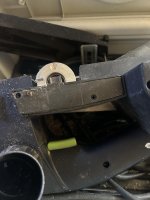Richard/RMW said:
I tend to think of planes for trueing a long-ish edge, the shorter the plane the shorter the edge you can true easily. This overlooks simply knocking a bump off of a board.
I've been trying to come up with a justification for the 12v Milwaukee but so far it's eluded me. Seems like it'd be handy to have in the arsenal but I'm doubting I'd use it often.
Aside from scribing, what would you actually use one for on a regular basis?
RMW
Carpentry
- flattening structural framing surface when plywood/drywall/etc. needs to be put over them. Especially when repair/rebuild of a part.
- lightly planing raw (wet) framing for roof and/or external structures for easthetics
- removing bumps, basically anything where the shape of structural element needs to be adjusted kinda ad-hoc
- chamfering framing edges
- last but not least, renewing timber that was left on the outside for some time
Cabinetry
- rabbets where abrsolute precision is not required
- hmm, a good question ...
In general, bar the comment about removing rough sports before jointing, I would say a hand planer is the tool to use mostly where one would not run the wood through a joiner or a planer for one reason and the other. Like it is already installed, is too bent, too big, etc.
Before I had a hand planer (not Festool, same size as HL850), I did not know I needed one. Since I got it for a specific work, I use it quite often for a small job here and there where I would have previously went for an aggressive sander (and a lot of dust along with it).
In a way, ROTEX can be probably seen as the best substitude of a hand planer as far as what it can do. Albeit planer is still way faster and unlike a ROTEX it can reasonably flatten a rough beam.

